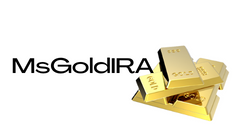Real estate, with its staggering $400 trillion in global value, has long been hailed as the ultimate store of wealth, overshadowing even the stock market and global GDP combined. But have you ever stopped to wonder why real estate reigns supreme in the world of collateral?
The Secret Power of Real Estate Collateral
Democratizing Credit Through Mortgages
Real estate has been the darling of banks when it comes to collateral for one simple reason: it offers stability and security like no other asset. Mortgages have revolutionized credit accessibility, allowing property owners to leverage their assets without relinquishing ownership. In essence, real estate has become the undisputed king of store-of-value assets.
The Rise of Bitcoin: A Game Changer in Collateral
Now, imagine a world where collateral doesn’t rely on legal systems for enforcement. Enter Bitcoin. As a form of collateral, Bitcoin outshines real estate in numerous aspects: it's universally available, instantly transferable, programmable, and securely encrypted. While liquidating real estate involves a labyrinth of market intricacies, Bitcoin can be converted with a simple click.
The Shift in the Financial Landscape
Generational Preferences and Digital Evolution
A seismic shift is occurring in the financial realm, particularly driven by changing demographics and technological advancements. Millennials and Zoomers are eschewing traditional assets like real estate in favor of more portable, global, and internet-native options. The digital nomad lifestyle is gaining momentum, reshaping the concept of wealth storage.
The Rise of Bitcoin Among the Younger Generations
Surveys indicate a clear departure from conventional investment choices among younger age groups. Zoomers are showing greater interest in cryptocurrencies like Bitcoin compared to stocks, real estate, or bonds. This generational pivot towards digital assets hints at a tectonic transformation in the financial landscape.
The Inevitable Disruption
The Impending Transformation
With the growing acceptance of Bitcoin as collateral and the evolving preferences of younger investors, a significant disruption is looming over the real estate market. As Bitcoin gains traction as a frictionless, programmable, and borderless asset, it may soon challenge the supremacy of real estate in the realm of wealth storage. The rapid pace of this shift may catch many off guard, but the transition seems inevitable.
Prepare yourself for a new era in collateral. Embrace the potential of Bitcoin as the future king of wealth storage, poised to reshape the financial landscape as we know it.
Frequently Asked Questions
How much should precious metals make up your portfolio?
To answer this question we need to first define precious metals. Precious Metals are elements that have a very high relative value to other commodities. This makes them extremely valuable for trading and investing. Today, gold is the most commonly traded precious metal.
But, there are other types of precious metals available, including platinum and silver. The price of gold fluctuates, but it generally remains stable during times of economic turmoil. It is not affected by inflation or deflation.
The general trend is for precious metals to increase in price with the overall market. That said, they do not always move in lockstep with each other. If the economy is struggling, the gold price tends to rise, while the prices for other precious metals tends to fall. Investors expect lower interest rates which makes bonds less appealing investments.
Contrary to this, when the economy performs well, the opposite happens. Investors choose safe assets such Treasury Bonds over precious metals. They are more rare, so they become more expensive and less valuable.
To maximize your profits when investing in precious metals, diversify across different precious metals. Furthermore, because the price of precious Metals fluctuates, it is best not to focus on just one type of precious Metals.
What are some of the benefits of a gold IRA
You can save money on retirement by putting your money into an Individual Retirement Account. You can withdraw it at any time, but it is tax-deferred. You have total control over how much each year you take out. And there are many different types of IRAs. Some are better suited to college savings. Others are intended for investors seeking higher returns. Roth IRAs, for example, allow people to contribute after they turn 59 1/2. They also pay taxes on any earnings when they retire. However, once they begin withdrawing funds, these earnings are not taxed again. This account is a good option if you plan to retire early.
Because you can invest money in many asset classes, a gold IRA works similarly to other IRAs. Unlike a regular IRA that requires you to pay taxes on the gains you make while you wait to access them, a gold IRA does not have to do this. This makes gold IRA accounts a great choice for those who want their money to be invested, not spent.
An additional benefit to owning gold through an IRA, is the ease of automatic withdrawals. It means that you don’t have to remember to make deposits every month. To avoid missing a payment, direct debits can be set up.
Finally, gold remains one of the best investment options today. It is not tied to any country so its value tends stay steady. Even in economic turmoil, gold prices tends to remain relatively stable. Therefore, gold is often considered a good investment to protect your savings against inflation.
What is the best precious-metal to invest?
Answering this question will depend on your willingness to take some risk and the return you seek. While gold is considered a safe investment option, it can also be a risky choice. You might not want to invest in gold if you're looking for quick returns. You should invest in silver if you have the patience and time.
Gold is the best investment if you aren't looking to get rich quick. If you want to invest in long-term, steady returns, silver is a better choice.
Statistics
- You can only purchase gold bars at least 99.5% purity. (forbes.com)
- Contribution limits$6,000 (49 and under) $7,000 (50 and up)$6,000 (49 and under) $7,000 (50 and up)$58,000 or 25% of your annual compensation (whichever is smaller) (lendedu.com)
- This is a 15% margin that has shown no stable direction of growth but fluctuates seemingly at random. (smartasset.com)
- Indeed, several financial advisers interviewed for this article suggest you invest 5 to 15 percent of your portfolio in gold, just in case. (aarp.org)
- Instead, the economy improved, stocks rebounded, and gold plunged, losing 28 percent of its value in 2013. (aarp.org)












